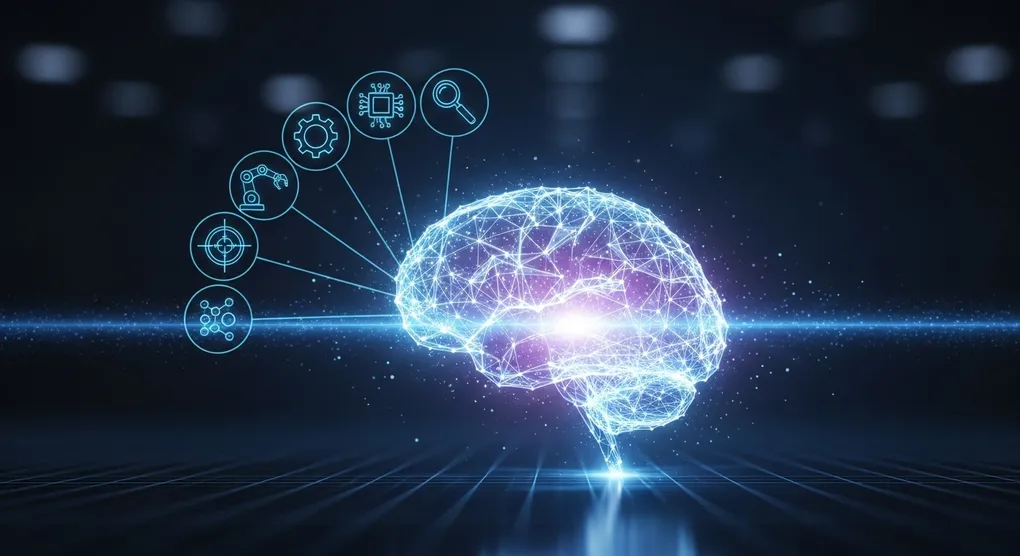
OpenCode: Modular Agent System for Scalable AI Development
Introduction
AI development workflows often hit context limits when a single agent tries to handle planning, implementation, testing, and documentation simultaneously. This leads to context drift, debugging overhead, and overwhelming complexity. The solution lies in creating a modular agent system that scales while keeping each agent focused on specific tasks.
The Problem with Single-Agent Workflows
Traditional AI development approaches often involve one primary agent handling multiple responsibilities:
- Task planning and breakdown
- Code implementation
- Quality review and testing
- Documentation updates
- Bug fixing and debugging
As conversations grow longer, the main agent’s context becomes convoluted, leading to:
- Context drift - losing focus on original requirements
- Quality degradation - missing edge cases and implementation details
- Debugging overhead - spending more time fixing than building
Modular Agent Architecture Solution
The modular approach introduces two types of specialized agents working in coordination:
Primary Agent (Orchestrator)
- Role: Coordinates the overall workflow and big-picture understanding
- Responsibilities:
- Breaks down complex tasks into manageable components
- Delegates work to appropriate subagents
- Validates and integrates results from subagents
- Maintains high-level project context
- Context: Full project overview and architectural decisions
Subagents (Specialists)
- Role: Handle specific tasks with focused expertise
- Types:
- Planning Agent: Creates detailed implementation roadmaps
- Task Manager: Breaks down tasks into actionable steps
- Code Reviewer: Ensures code quality and best practices
- Testing Agent: Validates functionality and writes tests
- Documentation Agent: Updates and formats documentation
OpenCode Agent Configuration
OpenCode provides two methods to set up your agent system:
Method 1: JSON Configuration
Create an opencode.json config file:
{
"mode": "primary",
"model": "claude-3-5-sonnet",
"temperature": 0.7,
"tools": ["read_file", "write_to_file", "execute_command"],
"prompt": "You are the primary orchestrator..."
}Method 2: Markdown Configuration (Recommended)
Create agent files in .opencode/agents/ directory:
---
mode: primary
model: claude-3-5-sonnet
temperature: 0.7
tools: [read_file, write_to_file, execute_command]
---
# Primary Agent Prompt
You are the primary orchestrator for AI development projects...Recommended Workflow Structure
The optimal workflow follows a systematic progression:
-
Planning Phase (Planning Agent)
- Analyze requirements and project state
- Create detailed implementation roadmap
- Break down into actionable tasks
-
Implementation Phase (Task Manager + Code Agent)
- Execute tasks in logical order
- Make code changes systematically
- Maintain implementation consistency
-
Review Phase (Review Agent)
- Code quality assessment
- Best practices validation
- Performance optimization suggestions
-
Testing Phase (Testing Agent)
- Write comprehensive tests
- Validate functionality
- Ensure edge case coverage
-
Documentation Phase (Documentation Agent)
- Update README and code comments
- Create usage examples
- Document architectural decisions
Context Management Benefits
This architecture provides several key advantages:
Focused Context
Each agent receives only relevant context for its specific task, preventing information overload and maintaining clarity.
Scalable Architecture
Add new specialized agents as your project grows without affecting existing agent performance.
Consistent Quality
Specialized agents develop expertise in their domain, leading to more consistent and higher-quality outputs.
Reduced Debugging
Clear separation of concerns makes it easier to identify and fix issues in specific areas.
Implementation Example
Here’s how to set up a basic modular agent system:
1. Create Agent Directory Structure
.opencode/
├── agents/
│ ├── primary-agent.md
│ └── subagents/
│ ├── planner.md
│ ├── task-manager.md
│ ├── reviewer.md
│ └── tester.md2. Configure Primary Agent
---
mode: primary
model: claude-3-5-sonnet
temperature: 0.3
tools: [list_files, read_file, search_files]
---
# Primary Orchestrator
You coordinate AI development workflows by:
1. Breaking down complex tasks into manageable components
2. Delegating work to appropriate subagents
3. Validating and integrating results
4. Maintaining project-level context
Always follow this workflow:
- Plan → Task → Implement → Review → Test → Document3. Configure Subagents
Each subagent should specify its location for the primary agent to find:
---
mode: subagent
model: claude-3-5-sonnet
temperature: 0.7
tools: [read_file, write_to_file, execute_command]
location: subagents/planner.md
---
# Planning Agent
Create detailed implementation plans and break down complex tasks...Model Selection Strategy
Different agents benefit from different model characteristics:
- Planning Agent: Use creative models (Gemini 2.5 Flash) for innovative solutions
- Task Manager: Use reliable models (Claude 3.5 Sonnet) for consistent breakdown
- Code Reviewer: Use analytical models (GPT-4) for thorough code analysis
- Testing Agent: Use precise models (Claude 3.5 Sonnet) for accurate validation
Authentication Setup
Ensure all required API keys are configured:
opencode auth login
# Follow prompts for each provider (Anthropic, OpenAI, Google, etc.)Best Practices
Agent Communication
- Use clear, structured prompts for each agent
- Specify exact file locations for subagents
- Include relevant context without overwhelming details
Context Boundaries
- Give each agent only the context it needs
- Use project documentation for persistent context
- Avoid passing implementation details between planning phases
Error Handling
- Implement validation steps between agent handoffs
- Use review agents to catch integration issues
- Maintain clear error reporting and debugging trails
Real-World Application
This system was successfully demonstrated by creating a Snake game from scratch:
- Planning: Analyzed requirements and created game architecture
- Task Management: Broke down into 17 actionable tasks across 3 phases
- Implementation: Built game mechanics, UI, and controls
- Review: Validated code quality and performance
- Testing: Ensured game functionality and edge cases
The result was a fully functional Snake game with proper game mechanics, scoring, and responsive controls.
Conclusion
Modular agent systems represent a significant improvement over single-agent workflows by:
- Preventing context overload through focused responsibilities
- Improving code quality with specialized expertise
- Scaling development teams without coordination overhead
- Reducing debugging time through clear separation of concerns
This architecture transforms AI development from an overwhelming single-threaded conversation into a coordinated team of specialized agents working toward a common goal.
The key is finding the right balance between agent specialization and workflow coordination, ensuring each agent has clear responsibilities while maintaining smooth handoffs between phases.
This is a content generated from: https://www.youtube.com/watch?v=EOIzFMdmox8